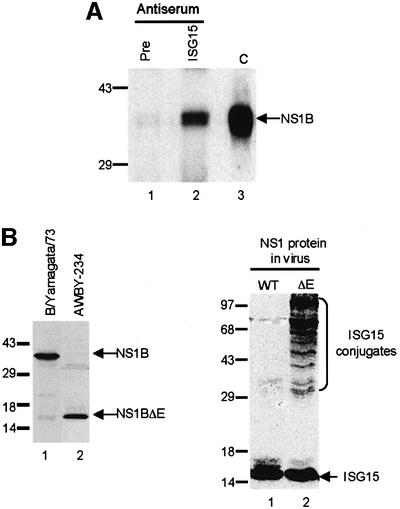
Fig. 8. (A) The NS1B protein is physically associated with the ISG15 protein in influenza B virus-infected cells. A549 cells infected with influenza B/Lee/40 virus were collected at 18 h post-infection, and were immunoprecipitated with either pre-immune mouse serum (lane 1) or mouse anti-ISG15 antiserum (lane 2). The immunoprecipitated proteins were resolved by 12% SDS–PAGE, followed by western blotting using rabbit anti-NS1B antiserum. C (lane 3), purified NS1B protein run on the same gel. (B) The NS1B protein inhibits the coupling of ISG15 to its target proteins in influenza B virus-infected cells. Left panel: the AWBY-234 mutant of B/Yamagata/1/73 synthesizes a truncated NS1B protein. A549 cells were infected with either influenza virus B/Yamagata/1/73 (lane 1) or its AWBY-234 mutant (lane 2) at 20 p.f.u./cell. At 18 h after infection, proteins were resolved by gel electrophoresis, followed by western blotting using rabbit anti-NS1B antiserum. Right panel: conjugation of ISG15 to its target proteins occurs in cells infected with the AWBY-234 mutant (ΔE NS1 protein; lane 2), but not in cells infected with wild-type virus (WT NS1 protein; lane 1). At 18 h after infection, proteins were resolved by gel electrophoresis, followed by western blotting using rabbit anti-ISG15 antiserum.
